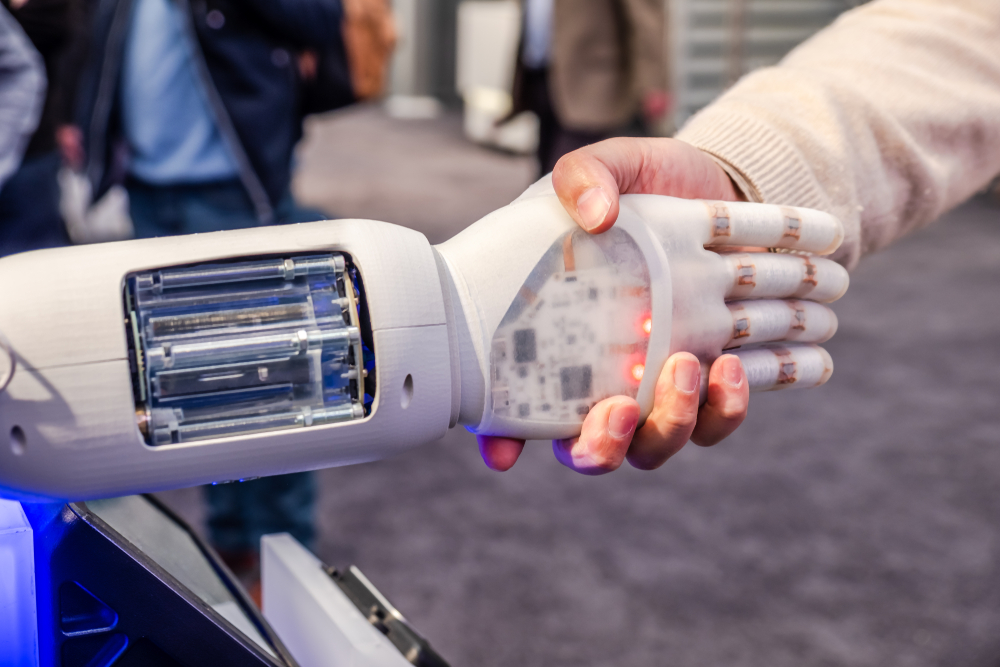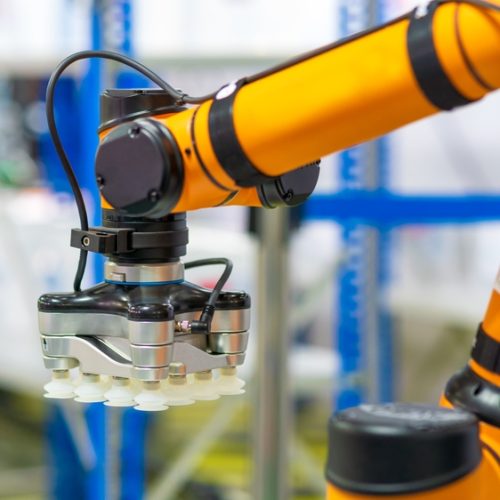What Is a Cobot?
In today’s rapidly evolving technological landscape, businesses constantly seek innovative solutions to enhance productivity and efficiency. One breakthrough in the automation field is the creation of collaborative robots, commonly known as cobots. Unlike traditional automation methods that often require complex and costly setups, cobots offer a modernized and human-friendly approach to streamlining operations.
So, what is a cobot? A cobot is a robot designed to work alongside human workers in a shared workspace. These smart machines often have AI capabilities and are designed to collaborate with humans, emphasizing cooperation and synergy rather than replacing human labor. By leveraging artificial intelligence (AI), cobots can execute repetitive or physically demanding tasks, enabling human workers to focus on higher-value responsibilities.
How Are Cobots Expanding Automation for Manufacturers?
You might be asking yourself, what is a cobot useful for in manufacturing? These advanced machines are revolutionizing automation by offering many benefits and capabilities that traditional industrial robots often lack. Let’s look at how cobots are transforming manufacturing processes.
- Versatility: Cobots excel in various tasks, making them highly versatile additions to the workplace. They can be used in machine tending, material handling, welding, assembly, and product inspection. Unlike traditional robots which are typically designed for a specific purpose, cobots can be easily reprogrammed and adapted to different tasks, providing manufacturers greater flexibility and agility in their operations.
- Mobility: One of the key advantages of cobots is their mobility. Cobots can be easily moved between tasks without extensive reprogramming. This mobility allows manufacturers to optimize their production line layout, rearrange workstations, and adjust workflows as needed, improving efficiency and productivity.
- Flexibility and Adaptability: Cobots are a flexible and adaptable technology that can enhance business processes and increase efficiency. Whether a high-volume production line or a small-batch manufacturing process, cobots can seamlessly adjust their speed, precision, and output to meet specific requirements.
- Addressing Labor Shortages: Labor shortages are significant challenges manufacturers face. Cobots are crucial in filling this gap by increasing production and throughput. These robots can work round the clock, reducing the dependence on human labor and ensuring consistent output.
- Leveraging Human Know-How: Cobots empower manufacturers to tap into their workforce’s valuable knowledge and skills. By automating repetitive tasks, cobots allow human workers to step away from mundane activities, enabling them to contribute to more critical areas that require problem-solving, decision-making, and creative thinking.
V1A062 TM AI Cobot – Case Study CHAING CHERNG ft.ITRI
Reasons Why You Should Invest in Collaborative Robots
Still wondering, “What is a cobot?” and “Why should I invest in one?” Let’s explore why your business should consider integrating cobots into your operations.
- Safe Human-Robot Collaboration: One important reason to invest in cobots is their ability to safely work alongside humans without needing protective barriers. Cobots have advanced sensors and safety features that detect and respond to human presence, ensuring a secure working environment. This reduces the risk of accidents and enables closer collaboration between humans and robots.
- Minimal Disruption to Existing Infrastructure: Cobots offer a seamless integration process. Their compact size and flexibility allow them to easily incorporate into existing workspaces without requiring extensive modifications. This makes cobots an ideal choice for smaller companies or manufacturers operating in limited spaces, as they can reap the benefits of automation without significant disruptions or investments.
- Simplified Programming and Deployment: Unlike traditional industrial robots that typically require specialized knowledge and expertise from robotics experts, manufacturing personnel can program and deploy cobots. Intuitive programming tools and interfaces enable operators to easily teach cobots new tasks or adjust their operations as needed.
V1A060 TM AI Cobot – Case Study Mitutoyo Metal Processing Solution
Selecting A Cobot System for Your Business
There are several important factors to consider when selecting a cobot system for your business. Here are key considerations to guide you in the selection process:
- Task and Application Suitability: Begin by identifying the specific tasks and applications for which the cobot will be used. Different cobots are designed for various purposes, such as machine tending, assembly, packaging, or inspection. Assess your operational needs and select a cobot that aligns with the desired tasks, payload requirements, and operational environment.
- Safety Features and Compliance: Safety is the most important consideration when deploying cobots in a shared workspace with humans. Evaluate the safety features of the cobot system and ensure that they meet industry standards. Additionally, consider the cobot’s ability to collaborate safely with humans, employing protective measures such as speed and force limitations.
- Programming and Integration: Assess the ease of programming and integration with your existing systems. Look for cobots with user-friendly interfaces that enable intuitive programming and quick task implementation. Compatibility with common programming languages and software platforms can simplify integration with your manufacturing environment, reducing setup time and increasing efficiency.
- Precision and Accuracy: Considering the precision and accuracy required for your applications is essential. Evaluate the cobot’s repeatability, positional accuracy, and payload capacity to ensure it can reliably perform the intended tasks.
- Cost and Return on Investment: Analyze the cost implications and return on investment (ROI) associated with the cobot system. This can include looking at the upfront costs of purchasing the cobot and ongoing expenses like maintenance, training, and potential system upgrades. Evaluate the potential gains in productivity, labor cost savings, improved quality, and increased operational efficiency to determine the ROI over time.
Experience Techman Robot’s AI Cobots – equipped with advanced AI and machine learning to enhance efficiency over time. With a smart vision system, these versatile cobots excel in material handling, AI inspection, palletizing, and offering ease of use for various applications. Discover the power of Techman Robot’s AI Cobots for unparalleled productivity and versatility in your business.


